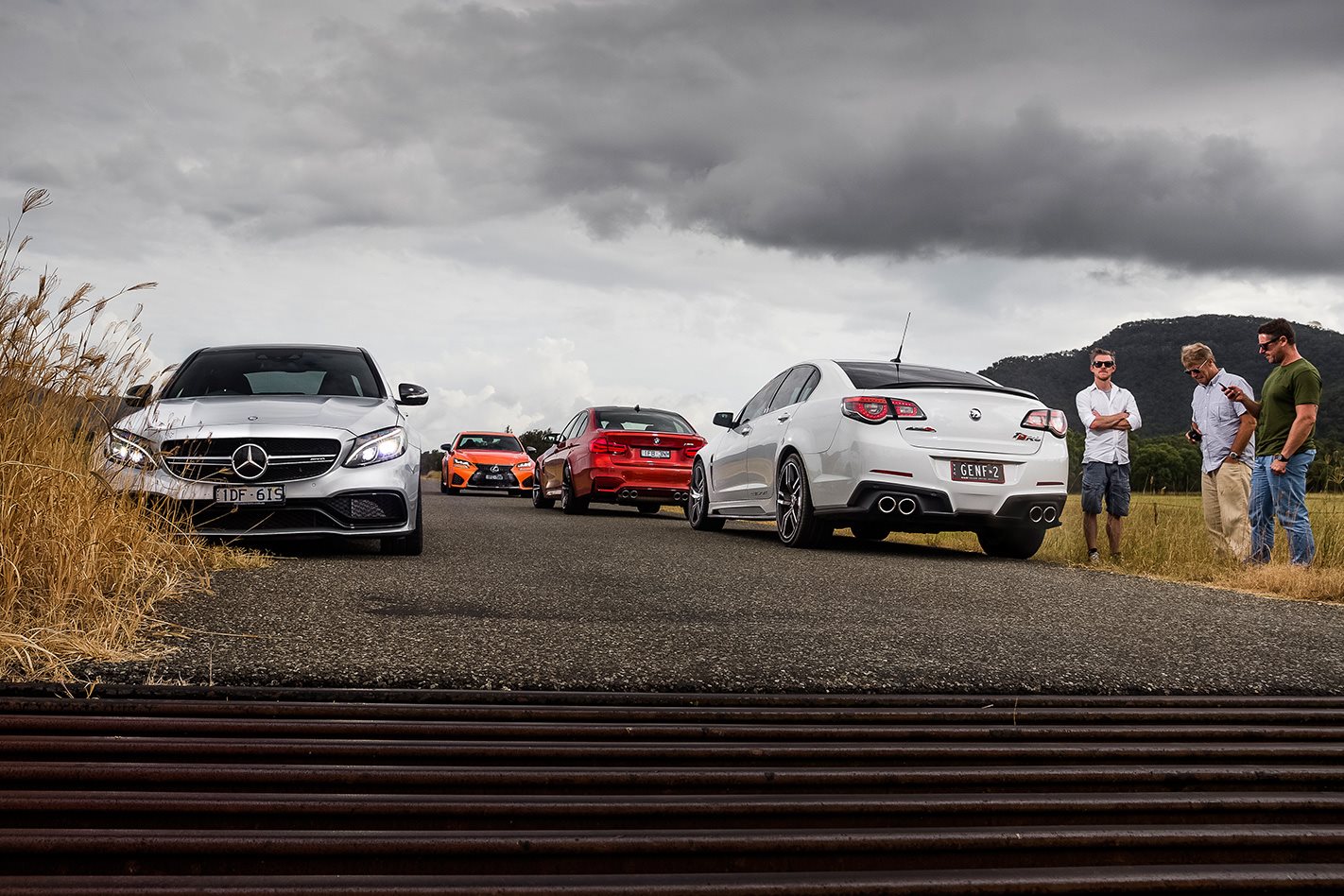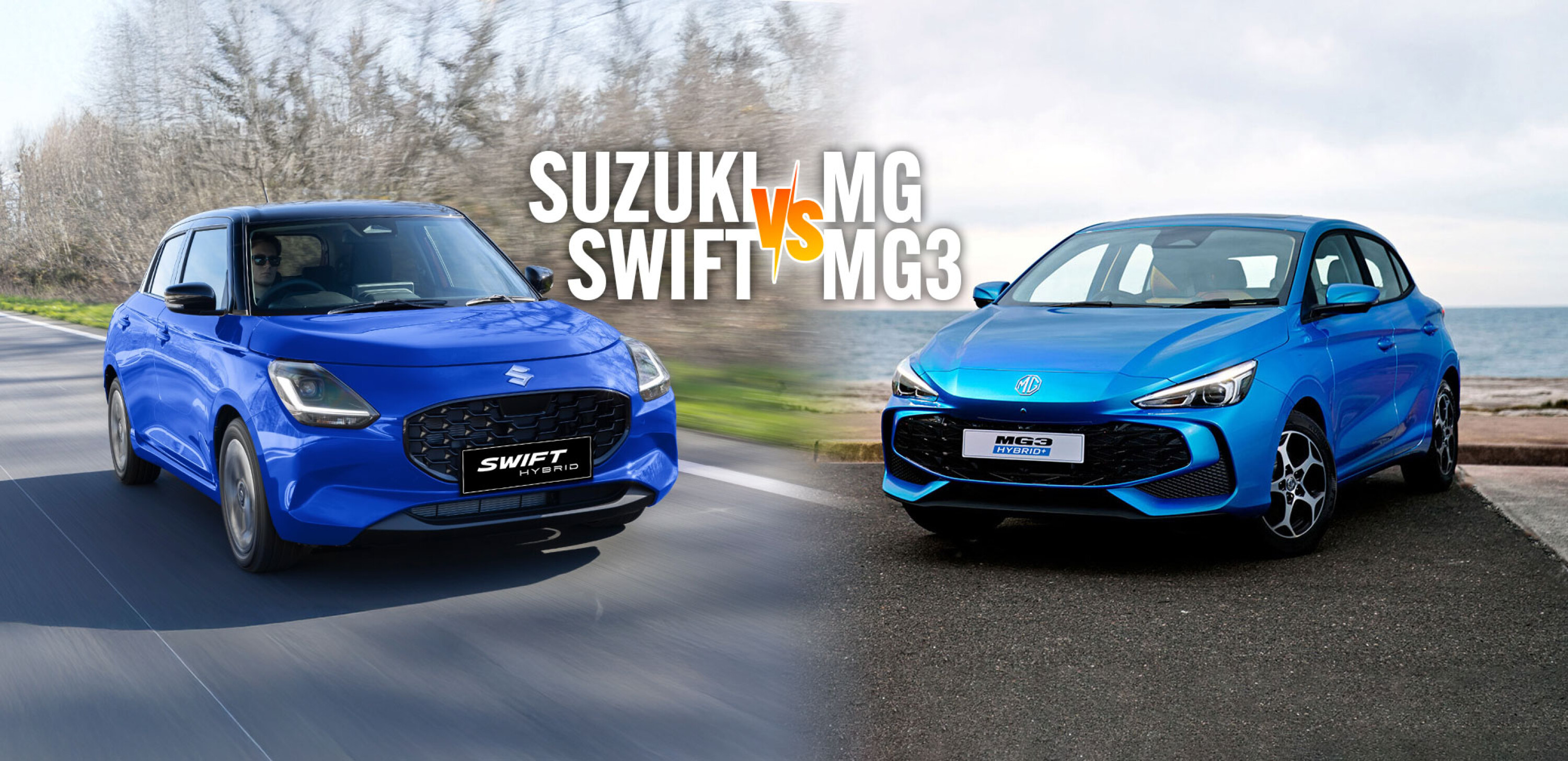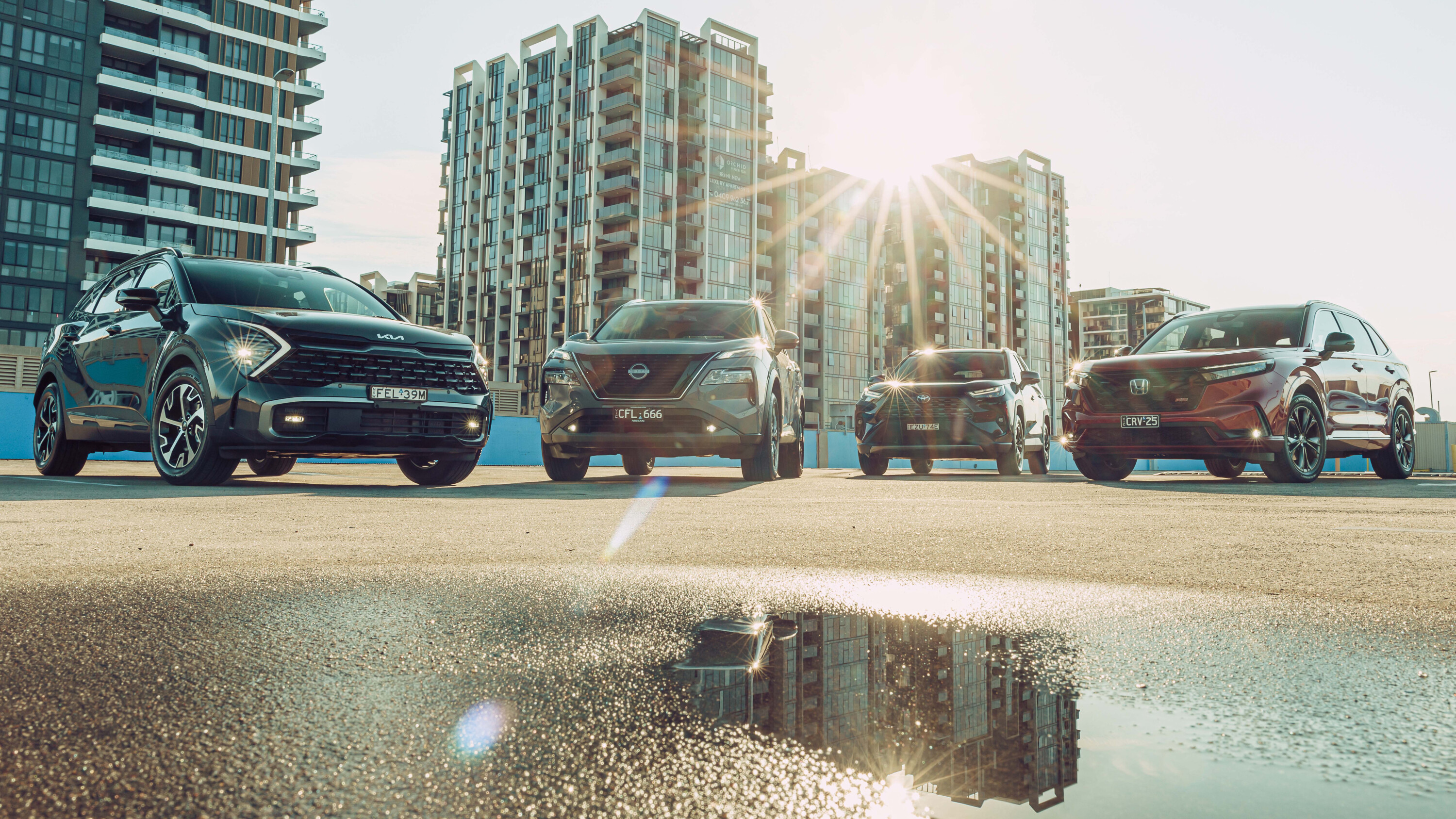First published in the June 2016 issue of Wheels magazine, Australia’s best car mag since 1953.
It would be easy to assume that people don’t understand subtlety anymore. Instagram selfies, bigger muscles, fuller lips, more Facebook likes, more hype. And often inversely proportional to the size of someone’s intellect. Long gone are the days of the intelligentsia receiving rock-star reverence, and ditto the likelihood of slipping under the radar in an AMG.
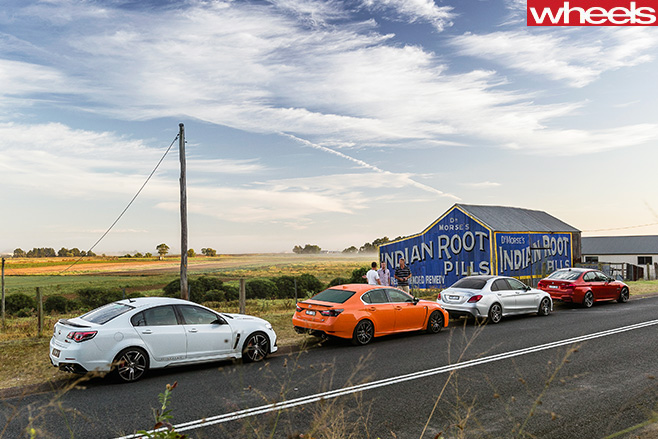
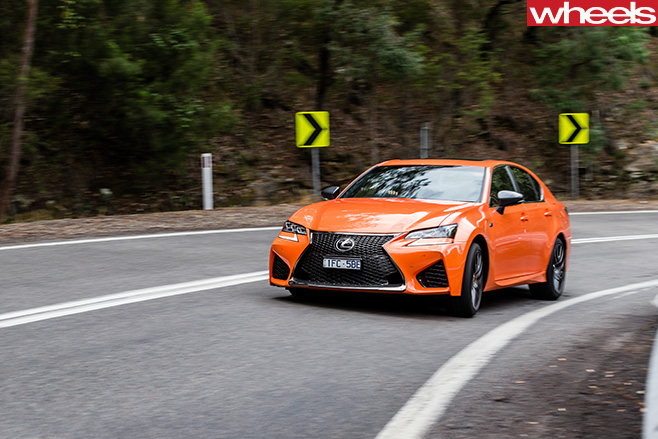
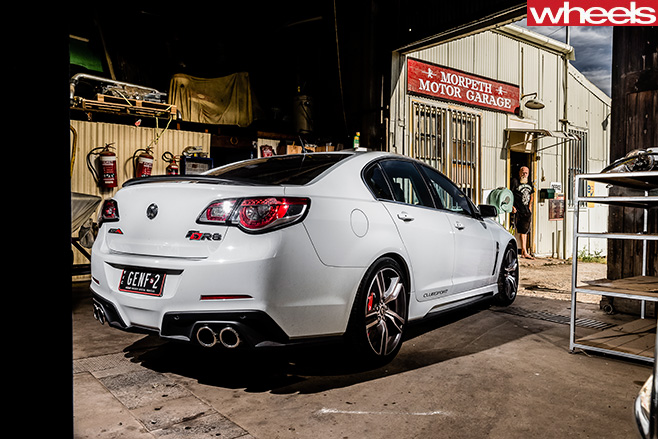
And while a size-for-size stoush says the HSV’s natural rivals are the BMW M5 and Mercedes-AMG E63, the $80-100K price point of the supercharged Gen-F2 line-up says BMW’s smaller yet still searing (and roomy) $139,900 M3 sedan is a better fit.
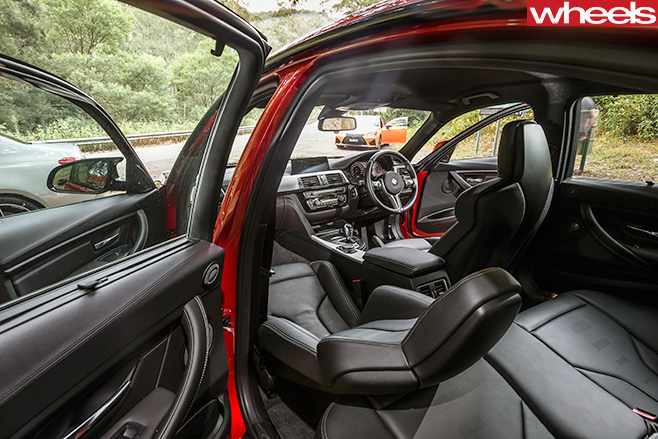
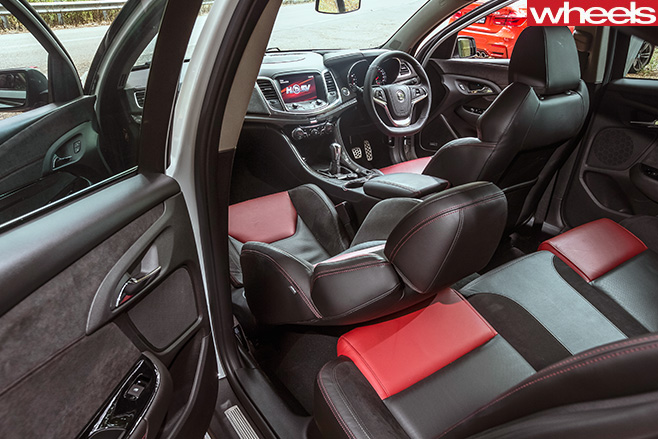
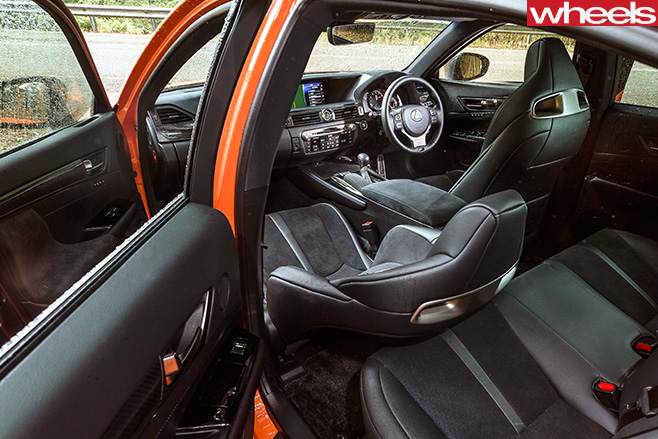
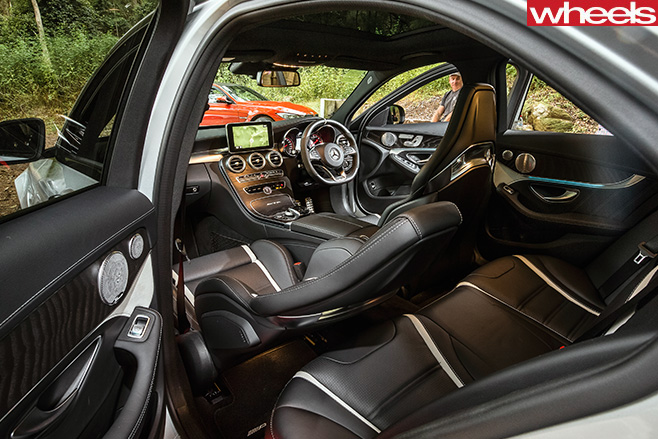
HSV’s true equivalent to the velvet-boxing-glove C63 S, M3 and GS-F would surely be the slightly more demure blown Senator with adaptive magnetic-damper suspension, but we really wanted to see whether the fixed-damper Clubby feels polished enough to transcend its massive price saving. And then there’s the attraction of its increasingly rare manual gearbox, which deserves to be celebrated.
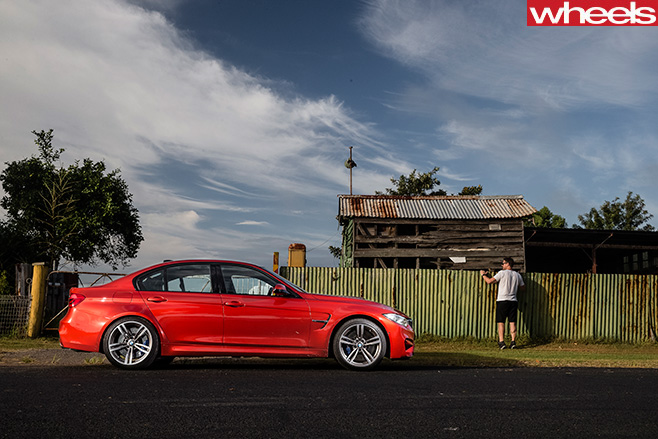
While the Clubsport LSA’s soundtrack can’t quite match the bassy ferocity of its 430kW GTS big brother, from zero to 80km/h, just shy of cut-out in first, it’s just three-hundredths slower than the C63 and one-tenth off the M3. Even to 160km/h, the difference is only a second and, while the HSV ultimately cedes accelerative honours to the Germans, the exhaust-crackle theatrics trumpeted from its bi-modal exhaust are worthy of a sizeable YouTube following.
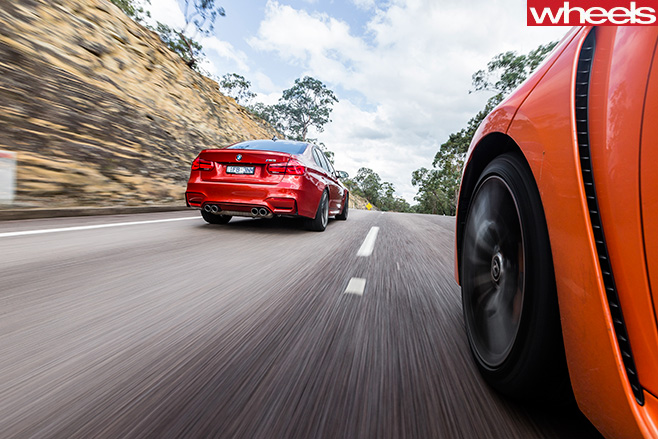
But the C63 S is ultimately the faster of the two, and the more tuneful. It whip-cracks from its quad exhausts as it upshifts with decisive intent, and beyond 180km/h it begins to pull well clear of the M3… not that anyone other than time-poor Germans hoovering up the autobahn between Stuttgart and Munich should give a damn.
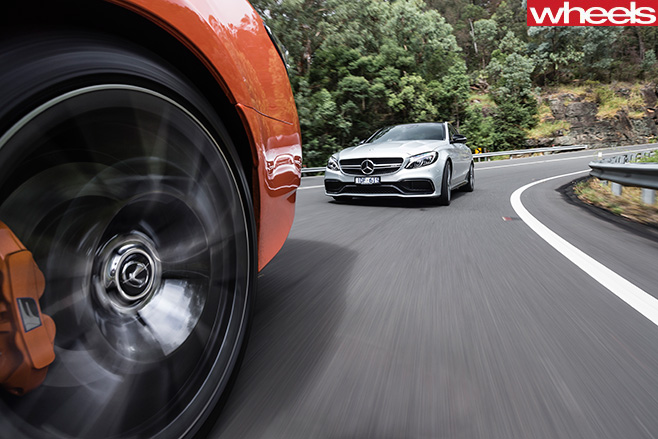
While not having a manual gearbox means it’s hard to play exhaust games, when the M3’s chubby turbo six is at full attack it’s still an effing brilliant sports sedan. Serving up unrelenting thrust and barking with each lightning-fast dual-clutch shift, there’s zero room for the chassis not to be on the same page.
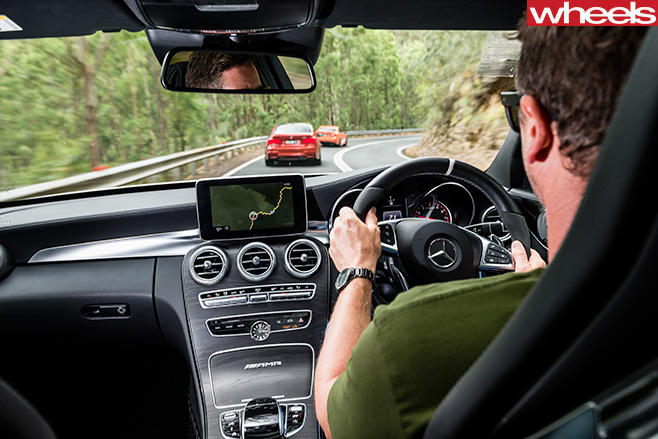
When really on it, the M3 driver is never entirely sure if the back is going to step sideways, and sometimes when it does it’s out and back in before you know it! If you’re aware of the BMW’s on-limit behaviour, it’s a wonderfully focused, fast and involving car, blessed with one of the world’s great steering wheels and the weight (in Sport mode) to match its bulldog stance. But the C63 eclipses it.
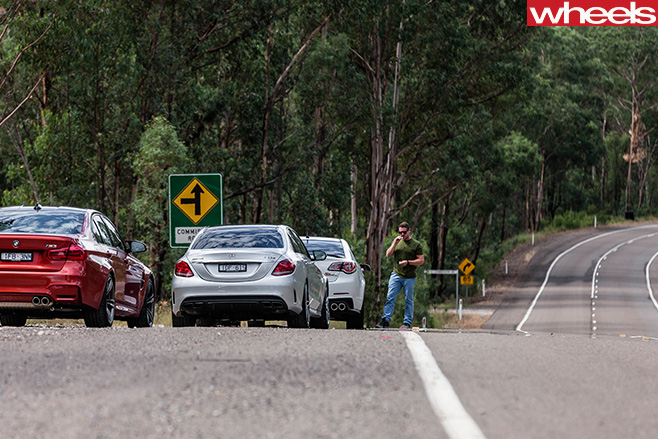
The AMG pivots on its rear end, points its pretty nose into a corner and traces a deliciously smooth line through before hooking up its Michelin Pilot Sport Cup rear boots and thundering ahead. And while it has grip to burn – certainly in the dry, and even in the wet if you aren’t too exuberant – there’s an adjustability to it that upholds the old W204 C63’s dynamic DNA while adding a whole new level of composure.
The AMG certainly feels much smaller and lighter than the Clubsport, with the added agility (and visibility) that goes with it, but that doesn’t mean that HSV’s blown bargain is unable put up a mighty fight. Providing you’re aware of the huge V8 sitting just behind the front axle line and the mass you’re wielding, the Clubsport is an incredibly capable beast, beautifully balanced by the throttle.
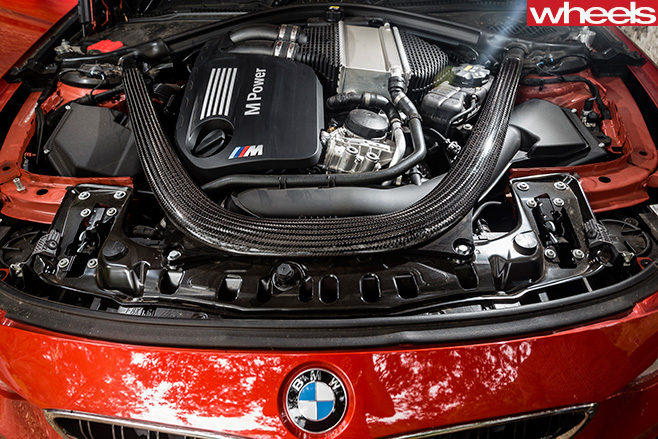
The Lexus is no dynamic duffer, either, despite what the purists might want to think. Its torque-vectoring system (labelled TVD) has three settings – Standard, Slalom and Track – though we left it exclusively in Slalom because that’s what makes the 1825kg GS-F feel most agile. And it corners. The torque vectoring really works in making the relatively large Lexus shrink around its driver, and the g-sensor that helps ensure its eight-speed auto is in the right gear at the right time is supported by the GS-F’s excellent balance. Only its steering drops the ball a little. While helpful in finessing the car’s cornering line, and linked to a rather likeable perforated-leather wheel, it’s too aloof for a sports sedan and no match for the GS-F’s entertaining chassis.
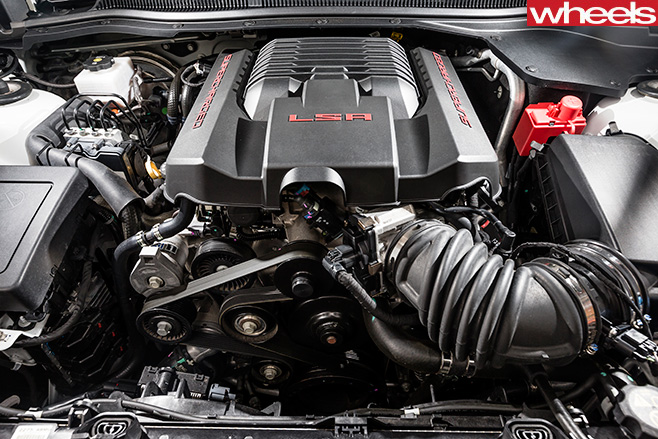
What the AMG manages with surprising efficacy is ride. Not in the truest sense because no car here is more firmly suspended than the C63, even in Comfort mode, and its lumpiness at low speed will have occupants rocking around like Bronwyn Bishop’s chopper in a strong wind. But at speed, it has a level of composure that enables it to resist irritating vertical movement while remaining hyper-focused in body control.
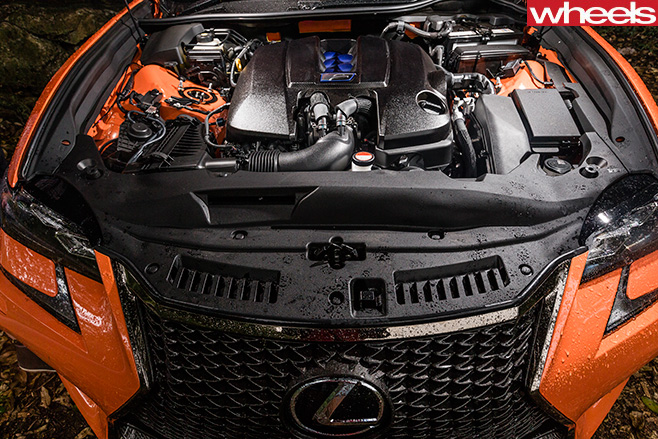
When you’re talking sprawling space, the HSV and Lexus put their longer wheelbases to good use. Each car’s rear seat is like stepping up to Business Class, with comparatively vast amounts of room in all directions. But, unexpectedly, it’s the Clubsport that offers the best ride of this group, even without the GTS’s excellent magnetic dampers.
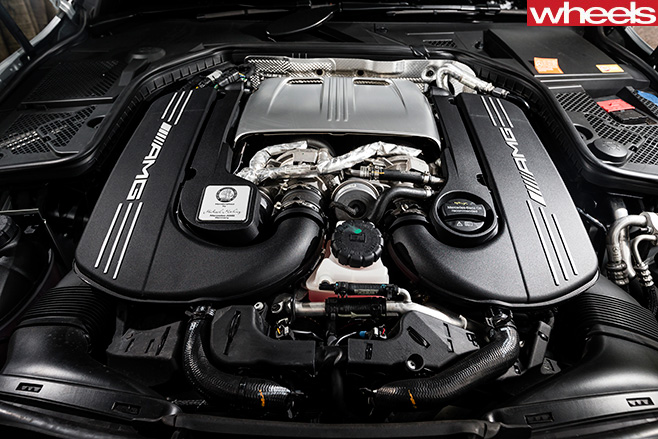
The whole point of grouping together this unlikely crew was never about putting apples with apples, or trying to turn a pumpkin into an orange. But that’s definitely what has happened to the now five-year-old, fourth-gen GS.
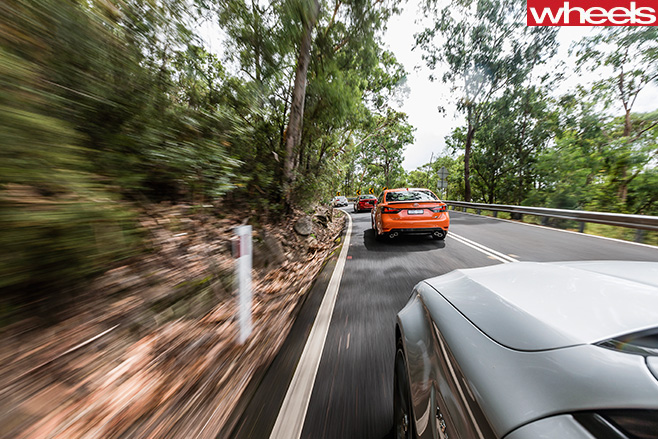
As far as relative bargains go, few will ever match HSV’s Clubsport LSA. It is vast – both in space and in visceral impact – and shouty in the best possible way, like it’s constantly yelling, “I’m having a freaking awesome time!”. It has the performance and dynamic ability to shade the Lexus, not to mention long-distance cabin comfort and ride quality to shame both the Germans. What that sharp entry sticker doesn’t buy is the craftsmanship on which its luxury-brand rivals build their reputations (for nearly double the price).
Charging a few thousand more for truly luxurious and beautifully stitched seat trim would go a long way to bridging the gap. The HSV’s benchmark seat comfort deserves as much.
In isolation, both the Germans are blinders – ballistic in a straight line, eye-widening around corners and dressed like the automotive equivalent of wearing a cutting-edge suit with pricey sneakers. In so many areas, they’re neck and neck – including fuel consumption averages over our 700km test of exactly 13.36L/100km each – but it’s the flavour left on your palette after gorging on both that ultimately makes one superior to the other.
The tough-looking M3 might be a brilliant all-rounder, and faster than just about any mortal could want, but it lacks that sprinkling of genius, the elusive pixie dust that separates real from surreal, that allows the C63 S to keep on giving. The uber AMG might be more expensive, and arguably less of a chest-beater for your Instagram account, but it’s hard to put a price on the X-factor quotient of a C63 S. Underestimate it at your peril.


